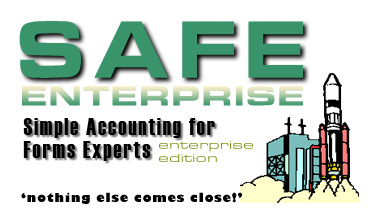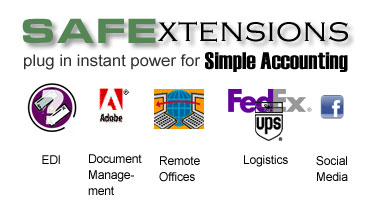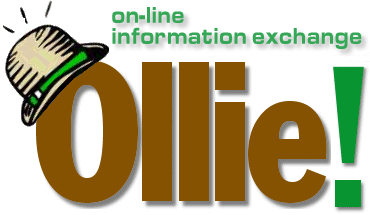 This browse displays all the items you have ordered from your vendors. It is accessed from the Inventory Main Menu, or from the Purchase Orders icon on the Toolbar.
This browse displays all the items you have ordered from your vendors. It is accessed from the Inventory Main Menu, or from the Purchase Orders icon on the Toolbar.
There are two sources for Purchase Orders in Simple Accounting (Customer and Distributor.) Two understand the difference, please read.
You generate Distributor Purchase orders from this screen and you also receive stock into your inventory from Distributor purchase orders. You can also use this screen to make miscellaneous adjustments to product levels, such as closing out an item, or adjusting their on-hand quantity manually.
A Sales Order is a transaction which contains a number of products you are going to sell or release to a single customer. A sales order may consist of products from several vendors on multiple purchase orders. A Purchase Order is a transaction involving a single Vendor. For Customer Purchase Orders. If you are used to thinking of a Purchase Order and a Sales Order as being one and the same thing, now is a great time to stop! You may have many Sales Orders which consist of a single product, and thus a single Purchase Order, but in Simple Accounting, the two perform very different functions!
Procedure
As with all Simple Accounting transactions, begin by pressing the <Ins> key or the [Insert] button.
A purchase order may contain as many line items as you like, provided that they are all from the same vendor and all are to be shipped from the same Site. Each line consists of a single Product ID and may contain one or more addresses to Ship To, just like sales orders.
PRINT FORMATS
Since each line item may use a different type of Spec, a purchase order may print on multiple P.O. Formats. That is, each line item will print on the various spec sheets you have installed for envelopes, labels, continuous forms, stock items, etc.
- A Spec form is a single page that contains detailed printer specifications for one item to be ordered. If there is more than one item to be ordered on the same spec purchase order, each item prints on a separate page but references the same purchase order number. Note, however, that each item may reference a different customer sales order.
- A Non-Spec form prints a single header and multiple line items on the page. This is for ordering items that do not require a specification such as stock paper, computer products and office supplies.
 Reminder: If a product has a spec, it will be indicated in the Products browse with the laser printer icon in the left most column. You can create or edit a spec by pressing the [Spec] button there.
Reminder: If a product has a spec, it will be indicated in the Products browse with the laser printer icon in the left most column. You can create or edit a spec by pressing the [Spec] button there.
You may combine Spec and Non-Spec items on the same purchase order. Non-Spec items print together on the Distributor P.O. followed immediately by the Spec items with each of these on a separate sheet, but with all items sharing the same purchase order number. However, you may not combine Custom Items (items linked to a sales order) and Stock Items (items for your own inventory) on the same purchase order.
Consult our Forms Design Service to learn how to set up Spec and Non-Spec purchase order formats for your business.
A WORD ABOUT COLOR IN PURCHASE ORDERS
Purchase orders are displayed in different colors in this browse depending on where they are at in the ordering cycle:
| Pink | Orders that have been entered but not yet printed. |
| Green | Orders are for printed P.O.s that are due to ship within the next seven days, open credits–items that have been invoiced and have a credit balance (an amount due the customer) |
| Red | Orders have also been printed, but are past the scheduled shipping date. In other words, they are past due and require immediate attention. |
| Blue | Orders are all other open orders (i.e. order which have been printed but not yet received. They are not past due, but not scheduled for immediate shipment.) |
| Brown | records are orders that have been acknowledged but not yet received. |
All other records (completed orders and voids) are displayed in black.
CORRECTIONS
Once a P.O. has been generated for items on an order, those items may still be freely edited or deleted from an order, however the items may not be reassigned to another P.O. If an error is found with an item after a P.O. has been generated, you must void the entire P.O. and generate a new Purchase Order.
Special Keystrokes & Buttons
All work is done from the browse using the following buttons:
| [Ctrl/Spacebar] | Tag or untags the selected item for generation. You are prompted to enter the quantity to be manufactured, plus the anticipated ship date for each item. The system allows you to select individual items from each customer order. |
| [Print] |
|
| [Delete/Void] | This button lets you print the following forms and reports:
Purchase Orders generate and print all items as P.O.s or Sales Orders. The system takes a few seconds to assign the correct P.O. Number using the NEXT PURCHASE ORDER NUMBER set in Setup Global Options. Each P.O. is assigned the current date for its ordering date, and the TERMS ID set for each vendor in the vendors main data file. Items for the same vendor will be grouped into a single P.O. with one sheet per item. Each sheet contains both the ordering information and the forms specification. Once you have printed a batch, you cannot use this function to reprint. The P.O.s are then automatically generated. This takes only a second or two, normally. Next, a dialog box appears:
If you checked the Include Specs box then selected items will include a complete print specification for the selected Product IDs. Specifications are taken from the FILES|Products data file and will be printed on the purchase order for each item selected. Finally, you then can enter a footer message. The default message is setup in Setup Global Options. After Printing the Purchase Orders, you are prompted to print Shipping Labels for the generated Purchase Orders. This option may be supressed using Security Extensions under Custom Settings This button also lets you print reports summarizing tagged items, and/or generated P.O.s. This is printed in order to maintain a hard copy record of the day’s P.O.s Print an envelope for the selected vendor. If the purchase has not been printed, the order is deleted. If it has, the record is kept with an ORDER STATUS of V and all line items on the purchase order are deleted. This does not delete or affect the sales order at all. To edit the sales order you need to go to Sales Orders. |
| Activities | Review and add Contact Activities to a Custom Purchase Order. The activities are linked using the Purchase Orders Sales Order ID, indicating the source Sales Order.
Activities are only applicable for Custom Purchase Orders (Purchase Orders generated from a Sales Order. Purchase Orders with linked activities display the following Yield icon in order to get your attention! |
 Including Printer Specifications?
Including Printer Specifications?


